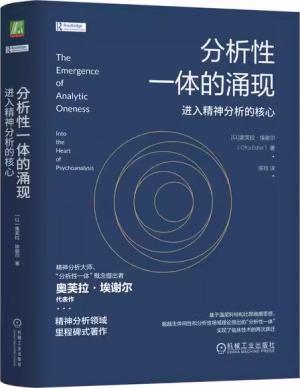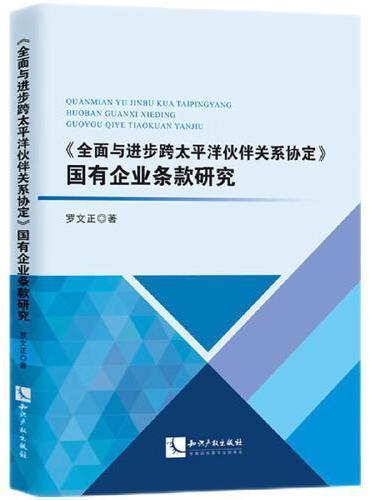新書推薦:

《
“御容”与真相:近代中国视觉文化转型(1840-1920)
》
售價:NT$
505.0

《
鸣沙丛书·大风起兮:地方视野和政治变迁中的“五四”(1911~1927)
》
售價:NT$
454.0

《
海洋、岛屿和革命:当南方遭遇帝国(文明的另一种声音)
》
售價:NT$
485.0

《
铝合金先进成型技术
》
售價:NT$
1214.0

《
英雄之旅:把人生活成一个好故事
》
售價:NT$
398.0

《
分析性一体的涌现:进入精神分析的核心
》
售價:NT$
556.0

《
火枪与账簿:早期经济全球化时代的中国与东亚世界
》
售價:NT$
352.0

《
《全面与进步跨太平洋伙伴关系协定》国有企业条款研究
》
售價:NT$
449.0
|
| 編輯推薦: |
|
内容新,覆盖面广,系统性强,可读性好,课后配有专业词汇、注释及练习,每课均有参考译文,全书配有电子教案、关键词索引等教辅资源,是学习通信、信息工程等专业英语的好教材。
|
| 內容簡介: |
|
本书旨在培养和提高学生在通信专业方面的英语阅读、笔译能力,同时也有助于培养英语专业文章的写作能力和对专业问题的口头表达能力。本书简要介绍科技英语的基本知识和特点。本书课文精选自国外知名大学的通信工程教科书,涵盖现代电子通信的各个领域,系统性强,且行文流畅。各课皆附有生词表、难点注释和练习题。书后附有参考译文和参考文献。为方便教学,本书另配有电子教案和练习题参考答案,向采纳本书作为教材的教师免费提供。
|
| 關於作者: |
陈杰美,电子科技大学老师,1960年毕业于成都电讯工程学院,1987年获丹麦技术大学博士,1988被聘为电子科技大学教授。
讲授课程:电子测量仪器、电子测量技术、信号与系统、数字信号处理、随机信号与系统、传感器、模拟电路、通信电路、专业英语
|
| 目錄:
|
CONTENTS
Lesson 0 科技英语的基础知识
0.1 科技英语中的几个关键问题
(Some Key Problems in Scientific and Technical English)
0.1.1 词汇(Vocabularies or Words)
0.1.2 虚义词(Form Words)
0.1.3 长句(Long Sentences)
0.2 翻译的准则(Criteria of Translation)
0.3 翻译中的变换(Changes in Translation)
0.3.1 词类的变换(Changes Between Word Classes)
0.3.2 词序的变换(Changes in Word Order)
0.3.3 省略(Ellipsis)
0.3.4 补充(Supplements)
0.3.5 引申(Extensions)
0.4 关于数量(Numbers and Quantities)
0.4.1 数制(Number Systems)
0.4.2 量词的缩写(Abbreviations about Numbers)
0.4.3 关于数量的增减(About Increase and Decrease)
0.5 数学符号与数学式(Mathematic Symbols and Expressions)
0.5.1 常用数学符号(Mathematic Symbols)
0.5.2 常用希腊字母(Grecian Letters)
0.5.3 常用数学式(Mathematic Expressions)
0.6 论文标题与摘要的写作(How to Write a Thesis)
0.6.1 论文标题(How to Write the Title)
0.6.2 论文摘要(How to Write the Abstract)
0.6.3 论文摘要的常用句型(Some Useful Patterns Used in the Abstract)
0.6.4 例子(Examples)
Lesson 1 Introduction to Electronic Communications
1.1 Historical Perspective
1.2 Electronic Communications Systems
1.3 The Electromagnetic Spectrum
1.4 Bandwidth and Information Capacity
Reading Material
Lesson 2 Information Sources
2.1 Speech and Music
2.2 Pictures
2.3 Computer Data
2.4 Noise
Reading Material
Lesson 3 Information Systems
3.1 Information and Data
3.2 Information System
3.3 Computerbased Information System
3.4 Business Information Systems
Reading Material
Lesson 4 Signal Generation
4.1 LC Circuits
4.2 Oscillators
4.3 IntegratedCircuit Waveform Generation
4.4 Digital Waveform Generation
Reading Material
Lesson 5 Random Processes
5.1 Introduction
5.2 Mathematical Definition of a Random Process
5.3 Stationary Process
5.4 Mean, Correlation, and Covariance Functions
5.5 Ergodic Processes
5.6 Gaussian Process
Reading Material
Lesson 6 Amplitude Modulation Transmission
6.1 Principles of Amplitude Modulation
6.2 Singleside Band Modulation
6.3 Generation of SSB Waves
6.4 Weaver SSB frequency shifting technique
Reading Material
Lesson 7 Angle Modulation
7.1 Representation of PM and FM Signals
7.2 Spectra of AngleModulated Signals
7.3 Narrowband Angle Modulation
7.4 Wideband Frequency Modulation
7.5 Preemphasis and Deemphasis in AngleModulated Systems
Reading Material
Lesson 8 Video Communications
8.1 Overview of Video communication
8.2 Typical Video applications
8.3 Communication Networks
Reading Material
Lesson 9 Transmission Lines
9.1 Types of Transmission Lines
9.2 Transmissionline Wave Propagation
9.3 Timedomain Reflectometry
Reading Material
Lesson 10 Electromagnetic Wave Propagation
10.1 Introduction
10.2 Optical Properties of Radio Waves
10.3 Terrestrial Propagation of Electromagnetic Waves
Reading Material
Lesson 11 Antennas and Waveguides
11.1 Introduction
11.2 Antenna Terminology and Definitions
11.3 Antenna Arrays and Array Antenna[14]
11.4 Waveguides
Reading Material
Lesson 12 Optical fiber communications
12.1 Fibers in communications
12.2 FiberOptic Communication Equipment
12.3 Transmitters Operational Considerations
12.4 WDM Systems
Reading Material
Lesson 13 Digital Modulation
13.1 Introduction
13.2 Factors That Influence the Choice of Digital Modulation
13.3 Binary Modulated Bandpass Signaling
13.4 Multilevel Modulated Bandpass Signaling
Reading Material
Lesson 14 Data Communications, Codes Error Control
14.1 Introduction
14.2 Data Communications Circuits
14.3 Data Communications Codes
14.4 Error Control
Reading Material
Lesson 15 Communication Networks
15.1 Telephone Networks
15.2 Computer Networks
15.3 Cable Television Networks
15.4 Wireless Networks
Reading Material
Lesson 16 Software Radio
16.1 Introduction
16.2 Characters of a Software Radio
16.3 The RF FrontEnd
16.4 Smart Antennas
16.5 Digital Generation of Signals
Reading Materia
|
|










